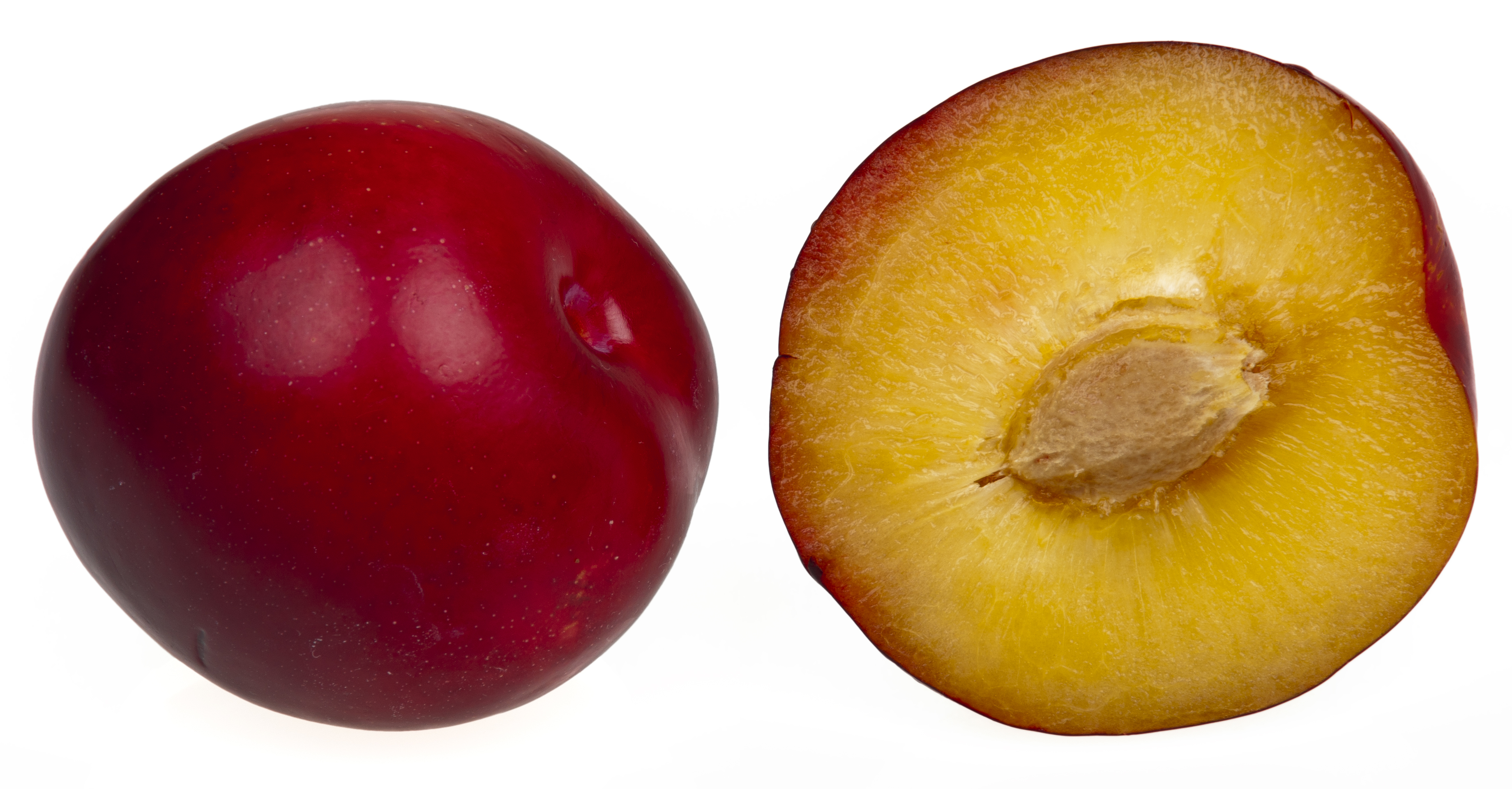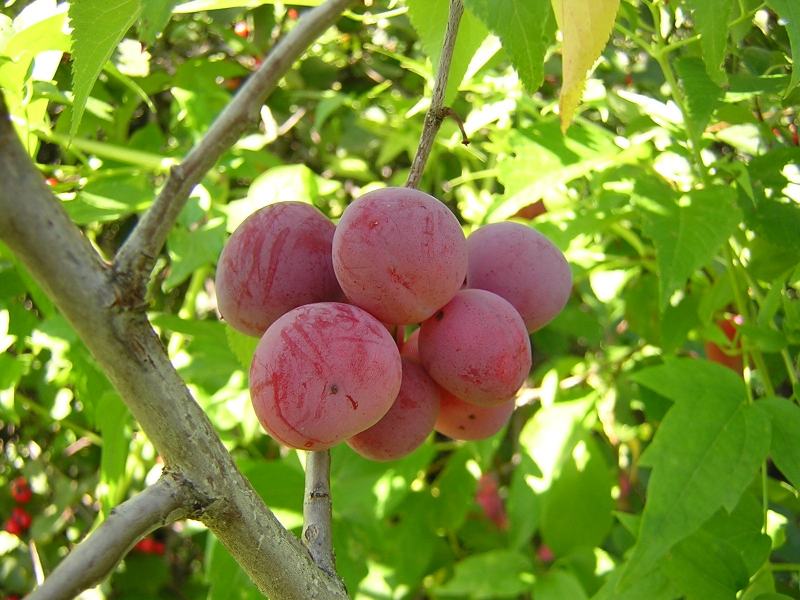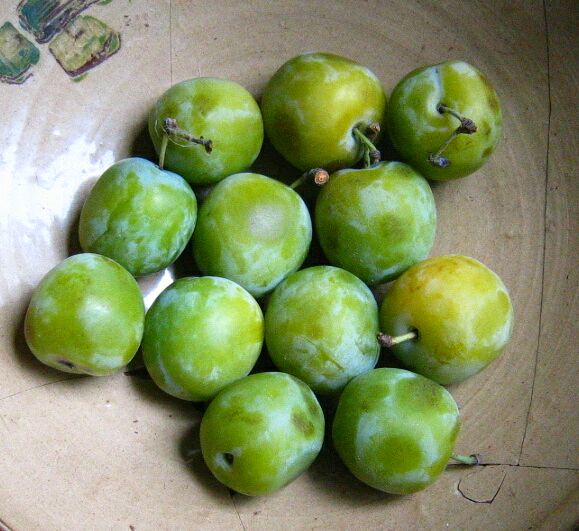Plums: A nonspecific term which means you can use whatever plums you want! These red/purple-skinned, yellow-fleshed plums are what I see most often for sale in grocery stores.
 |
| Wikipedia |
Wild Plums: Also just use whatever plums you want. I like to use the term "wild" to mean I can mix different types of plum together. I once lived in a city where a very popular tree used for decoration along the streets gave off these little round plums. Totally edible, and they were rarely harvested as they didn't belong to specific properties (or maybe the landlords didn't care and the tenants didn't know they could harvest them). Just fell to the ground and rotted :( I harvested them. Anyway, in the theoretical world of Redwall, I imagine any type of plum can grow wildly.
 |
| www.paulwcarlson.com |
Greengages: Green-colored plums. Wikipedia says: "Greengage fruit are identified by their round-oval shape and smooth-textured, pale green flesh; they are on average smaller than round plums ... The skin ranges in colour from green to yellowish, with a pale blue "blush" in some cultivars; ... [some] are reddish-purple due to crossbreeding with other plums. Greengages are grown in temperate areas and are known for the rich, confectionery flavour. They are considered to be among the finest dessert plums."
 |
| Wikipedia |
Damsons: A plum with green/yellow flesh and dark blue/light blue skin. (Some of the light blue is wax-bloom--like a powder that can be rubbed off to reveal the darker skin). This is the kind that grows in my yard, so it's mostly what I use. Wikipedia says: "Damsons are relatively small plums with a distinctive, somewhat astringent taste, and are widely used for culinary purposes, particularly in fruit preserves. ... The main characteristic of the damson is its distinctive rich flavour; unlike other plums it is both high in sugars and and highly astringent. The fruit of the damson can also be identified by its shape, which is usually ovoid and slightly pointed at one end, or pyriform; its smooth-textured yellow-green flesh; and its skin, which ranges from dark blue to indigo to near-black depending on the variety (other types of Prunus domestica can have purple, yellow or red skin)."
| Wikipedia |

No comments:
Post a Comment